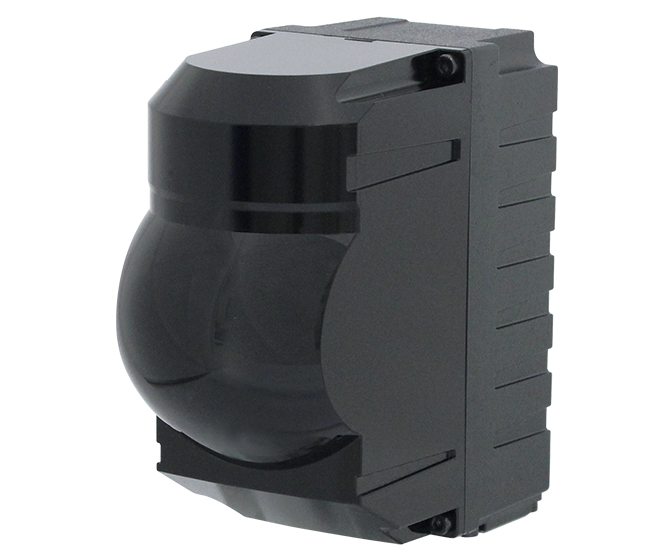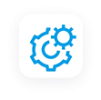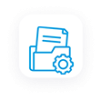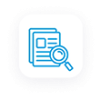Robots, Automated Guided Vehicles (AGVs), automated cranes, and other smart machines have been part of the industrial sector for years. Industrial automation adoption has been linear, and it is projected to reach USD 322.67 billion by 2030. Having been valued at USD 171.23 billion in 2022, this market is expected to grow at an astounding projected compound annual growth rate (CAGR) of 8.2% through 2030.
As the role of automation increases, the importance of its safe collaboration with the human workforce also becomes crucial. That's where the need for smart, durable, and versatile 3D LiDAR sensors arises.
3D LiDAR sensors provide vision and sensing to the machines so they can operate autonomously without damaging or harming anything. Their applications are not limited to manufacturing industries but to a larger development ecosystem. It includes smart cities, transportation, logistics, infrastructure, environmental conservation, and more.
Let's understand how 3D LiDAR sensors support autonomous capabilities in different sectors.
Applications of 3D LiDAR in Urban Planning
The shift from rural to urban areas has been constant globally. Data shows an increase of 780 million urban population within a decade. In 2014, the worldwide urban population was 3.92 billion and reached 4.70 billion in 2024.
Smart Cities
The growing urban population demands better planning so more people can be accommodated in an ecologically sustainable manner. That's why city planners use LiDAR-based 3D models to test ideas, design better streets, and coordinate infrastructure with accurate, real-world details.
The 3D LiDAR sensors help with mapping large areas. They provide high-resolution terrain data that helps find flood-prone spots, study landslide risks, and plan safe routes for people and vehicles.
Furthermore, the sensors can operate continuously to capture construction progress. The history of LiDAR scans can help measure pace and also allows for catching irregularities early, so they can be corrected.
Safe Construction
Not just that, while automated vehicles operate across different terrains, these 3D LiDAR sensors serve as their eyes. They prevent AGVs or AMRs from colliding with a foreign object as they collect real-time data and send a signal to the machine to stop or slow down in the event of an obstacle.
Similarly, the use of construction cranes for lifting heavy materials can be made safer and more accurate by equipping them with LiDAR sensors. Hokuyo’s YVT-35LX is one such 3D LiDAR sensor that helps with continuous scanning with a 210° Horizontal by 40° Vertical field of view.
Plus, it has a sensing distance range of 0.3 meters to 35 meters, making its detection capabilities flexible enough to detect both close- and long-range obstacles and prevent collisions.
Role of 3D LiDAR Sensors in Logistics and Warehouse Industry

Sensors perform volumetric dimensioning for pallets and parcels, guide precise dock alignment, and control speed and proximity in the aisle. Therefore, by mounting LiDAR sensors on robots, you can protect people, racks, other machinery, and goods.
Other applications of 3D LiDAR scanners in a warehouse include inventory management. You can integrate the sensor with the warehouse's central systems to receive data for inventory tracking, conveyor singulation and sorting, and zone-based safety areas. This sensor-supported automation cuts cycle times and minimizes damage while boosting throughput.
3D LiDAR Application in the Automotive Industry
The worldwide introduction of self-driving cars was perceived as one of the greatest inventions of the 21st century. It created a new sector within the industry that now focuses on producing autonomous consumer vehicles at scale, and LiDAR technology is its backbone.
The sensors collect, process, and transfer precise 3D maps of the surroundings in real-time to the vehicle's system to help it make the right decision. The data is used for more than just collision avoidance now. Driverless cars use it to turn, accelerate, slow down, navigate lanes, read road signs, and assess environments in real-time.
3D LiDAR Scanner Supported Smart Agriculture and Farming
Farmers can use LiDAR-equipped drones to assess crop health, monitor topography, create optimized irrigation plans, and conduct surveillance. Similarly, the farming machinery can use 3D LiDAR sensors for autonomous operations. Tractors are being equipped with these sensors so they can map areas in real-time and make decisions automatically without needing human assistance.
Other equipment, such as sprayers and harvesters, can also use 3D sensors for autonomous operations. Further, the sensors also protect them by providing obstacle avoidance capabilities. Therefore, based on geofence data, the machinery can slow down/stop based on predefined triggers.
The LiDAR also allows for volumetric measurements of stockpiles of grain, silage, and fertilizer, which farmers can use for amendments to reconcile inventories and plan procurement and logistics accuracy.
Choose 3D LiDAR Sensors for Smarter and Safer Autonomous Capabilities
As the industry's reliance on automation increases, the chances of false positives and safety lapses also rise. The adoption of automation is unavoidable to meet the increasing demand. However, accidents and low efficiency can be avoided with smart 3D LiDAR sensor technology.
3D LiDAR sensors send tiny light pulses and measure how long they take to return (time-of-flight). This builds a point cloud, a 3D dot map of the environment, which allows for real-time mapping, localization, and collision avoidance. Such properties are useful in every industry that relies on autonomous machinery, from manufacturing to farming.
At Hokuyo, we engineer advanced LiDAR sensor technology to support the Industrial Revolution 4.0. We aim to develop lightweight sensors with a small footprint and strong build quality that withstand the harshest conditions, so any industry can use them long term.
Learn more about 3D LiDAR and how they can help you scale the autonomous capabilities.

 Factory Automation
Factory Automation Logistics Automation
Logistics Automation Process Automation
Process Automation Crane Collision Avoidance
Crane Collision Avoidance LiDAR/Obstacle Detection
LiDAR/Obstacle Detection Safety Laser Scanners
Safety Laser Scanners Optical Data Transmission
Optical Data Transmission Hot Metal Detectors
Hot Metal Detectors Laser Distance Sensor
Laser Distance Sensor Blog
Blog Whitepapers
Whitepapers Case Studies
Case Studies Infographics
Infographics